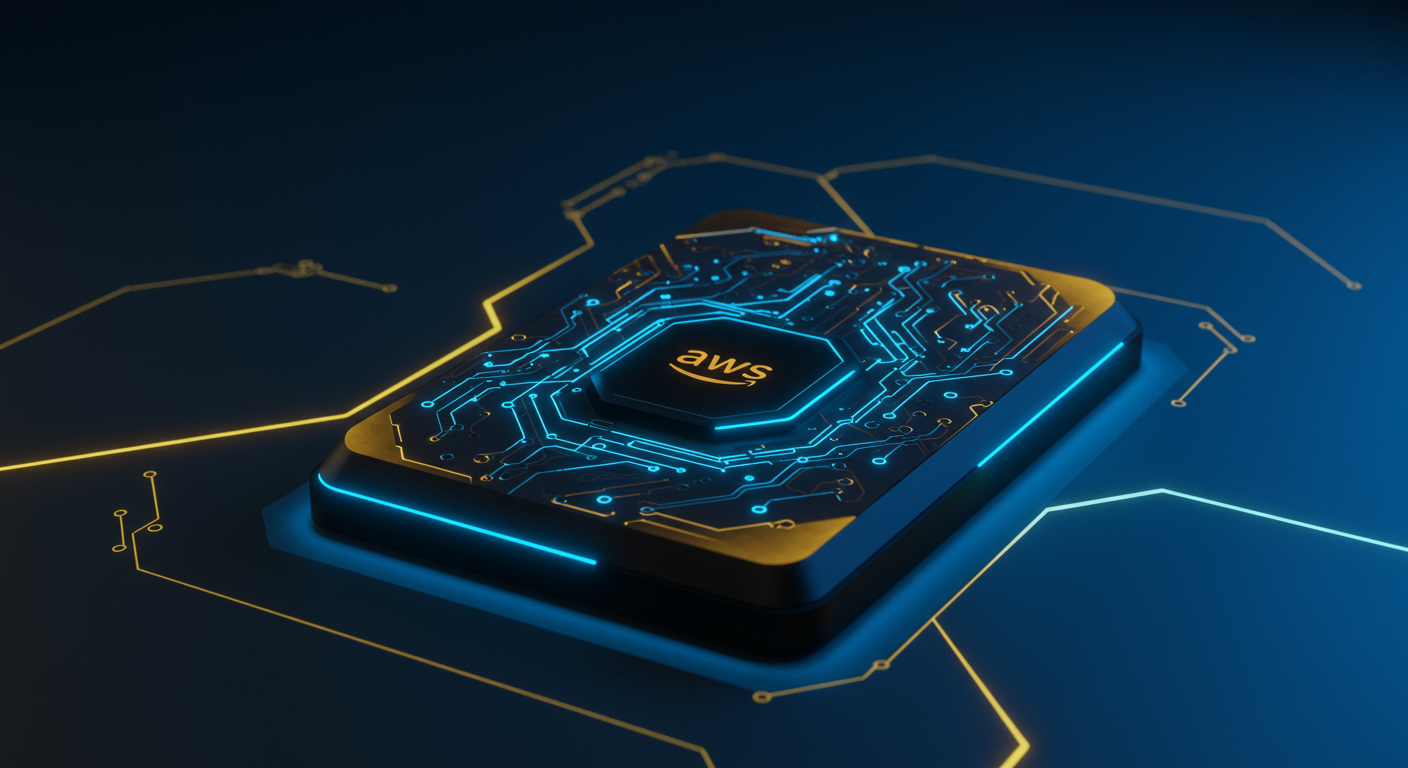Amazon Bedrock Flows Unleashed: Mastering Inline Code Nodes for Limitless AI

Unlocking Bedrock's Potential: The Power of Inline Code Nodes in Flows
Amazon Bedrock is leveling the playing field for generative AI application development, offering a powerful suite of tools.
Bedrock Flows: Visual AI Blueprints
Amazon Bedrock streamlines generative AI by providing access to leading foundation models. Bedrock Flows take this a step further, allowing you to visually construct AI workflows. Think of it as drag-and-drop AI, making complex processes accessible to a wider range of Software Developer Tools pros.
Inline Code Nodes: The Game Changer
The recently introduced inline code node feature is the key that unlocks true customization.
- Flexibility: No longer constrained by pre-built components. Integrate custom logic, data transformations, and API calls directly into your flows.
- Power: Use Python (and potentially other languages in the future!) to manipulate data, interact with external systems, and tailor AI responses with surgical precision.
Public Preview Perks & Caveats
Currently in Public Preview, this feature presents both opportunity and potential limitations:
- Opportunity: Early adopters can shape the future of the feature by providing feedback and identifying use cases.
- Caveat: Expect rough edges, potential bugs, and evolving functionality. It's cutting-edge, not fully polished, after all.
Why Now?

AWS is empowering users to move beyond simple workflows and create truly bespoke AI applications, driving further adoption and innovation within the Amazon Bedrock ecosystem. The rise of specialized AI tools for Software Developers demands this level of customizability.
In essence, inline code nodes are a quantum leap for Bedrock Flows, opening a universe of possibilities for AI application development. Now, let's see what you build!
Decoding Inline Code Nodes: What They Are and How They Work
Inline code nodes in Amazon Bedrock unlock unparalleled flexibility, letting you weave custom logic directly into your AI workflows. Think of it as injecting your own secret sauce into the recipe of AI processing.
Anatomy of an Inline Code Node
These nodes aren't just static snippets; they're dynamic execution points.
- Supported Languages: Python is your primary ally here. Its versatility meshes perfectly with AI tasks.
- Functionality: These nodes enable dynamic data transformation, custom calculations, and integration with external APIs – capabilities beyond standard visual components.
Under the Hood: Serverless Execution
Forget managing servers; AWS takes care of the heavy lifting.
- Serverless Architecture: Code executes within a secure, serverless environment, scaling automatically with your workflow demands.
- Containerization: Code is packaged and run in isolated containers, ensuring consistency and preventing interference. This approach is similar to services leveraging Docker for AI
Security First
AWS prioritizes your peace of mind.
- Sandboxed Execution: Code runs in a tightly controlled environment, mitigating potential security risks.
- Access Controls: Granular permissions limit the code's access to resources, preventing unauthorized data access or modification.
Bedrock Harmony
Inline code seamlessly integrates with other components:
- AI Models: Code can pre-process input data for AI models or post-process their outputs.
- Data Sources: Interact with databases, cloud storage, or external APIs to enrich your workflows. This is powerful when paired with tools like APIs for AI.
Inline code nodes within Amazon Bedrock Flows are unlocking a new era of AI customization.
Use Cases: Supercharging AI Workflows with Custom Code

These nodes aren't just about tweaking parameters; they're about fundamentally expanding what your AI workflows can do. Here are a few practical examples:
- Data Preprocessing & Transformation: AI models often need data massaged just so.
- Complex Logic & Decision Making: Sometimes, simple if/then statements don't cut it.
- You can implement intricate scoring systems based on multiple criteria.
- Or create decision trees that navigate complex scenarios using precise algorithms.
- External API Integration: Bedrock's capabilities are extensive, but what about accessing niche databases or specialized services?
- Custom Metrics & Evaluation: Standard metrics don't always tell the full story.
- Define metrics that align perfectly with your business goals using custom algorithms.
- Example: measure the "brand lift" generated by an AI-driven marketing campaign by analyzing social media sentiment before and after the campaign launch.
Amazon Bedrock Flows are about to get a whole lot more interesting, thanks to the power of inline code.
A Step-by-Step Guide: Building Your First Bedrock Flow with Inline Code
Ready to add some custom logic to your Amazon Bedrock flows? Inline code nodes let you do just that, no external services required. Let's build a simple flow to translate text using inline Python.
Setting Up Your Flow
- Create a New Flow: In the Bedrock console, start a new flow.
- Add an Input Node: Define an input parameter, say
text_to_translate(string type), where users will enter the text. - Insert the Code Node: Drag and drop an "Inline Code" node onto the canvas. This is where the magic happens!
Writing Your Inline Code
- The Code: Copy and paste the following Python snippet into the code editor. It's a basic example—feel free to get more creative.
python
import boto3
translate = boto3.client('translate')
response = translate.translate_text(
Text=input_data['text_to_translate'],
SourceLanguageCode='en',
TargetLanguageCode='es'
)
output_data = {'translated_text': response['TranslatedText']}
- Input/Output Parameters: Notice
input_dataandoutput_data. These are the bridges between your flow and your code.input_data['text_to_translate']fetches the text from the input node.
Testing and Debugging
- Define Input: Provide sample text in the "Input" section of the flow editor (e.g., "Hello, world!").
- Run the Flow: Execute the flow and check the "Output" section of the code node. You should see the translated text.
- Debugging: Bedrock provides basic error messages if your code fails. Double-check your syntax and dependencies.
Outputting the Results
- Add an Output Node: Connect the code node to an output node.
- Define Output: Configure the output node to display the
translated_textfrom the code node'soutput_data.
Inline Code vs. Bedrock Agents: Choosing the Right Tool for the Job
Amazon Bedrock lets you build AI applications in a variety of ways, but choosing between inline code nodes and full-fledged Bedrock Agents can feel like choosing between a scalpel and a Swiss Army knife. Which tool is the right fit for your particular task?
Inline Code: The Scalpel
Inline code nodes offer precision and control. You write snippets of code (typically Python) directly within your Amazon Bedrock workflow to perform specific tasks, like data transformation or API calls.
- Strengths: Fine-grained control, low latency, ideal for simple, well-defined tasks. Think of it as surgically enhancing a specific step in your AI process.
- Weaknesses: Limited compute resources, time constraints, and potential security risks if not carefully managed. This means they're unsuitable for complex operations or resource-intensive tasks.
Bedrock Agents: The Swiss Army Knife
Bedrock Agents are more comprehensive. They provide autonomous, task-oriented capabilities, including planning, reasoning, and tool orchestration. They are better suited for more complex tasks.
- Strengths: Autonomous problem-solving, can handle complex tasks with multiple steps, integrate with various tools. A great example of this might be automating a customer service request.
- Weaknesses: Higher latency, more complex to set up and manage, and potentially less precise than inline code for simple tasks.
When to Use Which
Use inline code for quick, targeted actions. Use Bedrock Agents for complex, multi-step workflows that require autonomous decision-making.
| Feature | Inline Code | Bedrock Agents |
|---|---|---|
| Complexity | Simple, specific tasks | Complex, multi-step tasks |
| Control | Fine-grained | Higher-level |
| Latency | Low | Higher |
| Scalability | Limited | High |
| Resource Limits | Strict | More Flexible |
Combining Approaches
The real magic happens when you combine both. For example, an agent could use an inline code node to quickly format data before sending it to a tool, ensuring both autonomy and precision.
Limitations
Remember that inline code nodes operate with limitations. Compute and time limits exist, and access to external resources may be restricted for security reasons. Always consider these constraints when designing your AI workflows.
Choosing between inline code and Bedrock Agents is about balancing precision and power. By understanding the strengths and weaknesses of each, and creatively combining them, you can build truly remarkable AI solutions. Think of it like this: You can use a tool like ChatGPT to help with the prompts for your agent, then use inline code to refine the final output.
Optimizing Performance and Security: Best Practices for Inline Code Nodes
Inline code nodes in Amazon Bedrock Flows are incredibly powerful, enabling custom logic within your AI workflows, but with great power comes great responsibility. We need to ensure they’re fast and secure, or else things could go sideways faster than a self-driving car in a Benny Hill episode.
Efficient Code is Key
Optimize code for serverless environments by keeping functions short and focused:
- Minimize dependencies: Only import necessary libraries. Bulky packages slow down execution.
- Use efficient algorithms: Choosing the right algorithm can drastically reduce processing time. Think sorting algorithms – quicksort vs. bubblesort, if you’re feeling nostalgic for CS 101.
- Cache results: If the same computation is repeated, store the result to avoid re-running it.
Securing Your Nodes
Security is paramount. Here's how to keep your inline code nodes safe:
- Input validation: Always validate inputs to prevent code injection. Sanitize user input like you’re scrubbing in for surgery.
- Access control: Limit permissions to the bare minimum. Avoid granting unnecessary access to resources.
- Prevent Code Injection: Never directly execute user-provided code.
- Regularly update dependencies: Keep libraries updated to patch known vulnerabilities. Outdated libraries are like unlocked doors for attackers.
Monitoring and Logging
- Implement robust logging: Record all key events, including inputs, outputs, and errors.
- Set up monitoring: Track performance metrics such as execution time, memory usage, and error rates. Datadog is a popular platform for monitoring cloud applications.
- Regular Audits: Periodically review code and configurations for potential vulnerabilities.
The future of Amazon Bedrock Flows is as limitless as the imagination itself, especially when considering the potential of inline code nodes.
Enhanced Functionality & New Features
What might AWS add next to make inline code nodes even more powerful? Think:- Debugging tools: Imagine real-time code debugging within the Amazon Bedrock interface, allowing for rapid iteration and error resolution. Bedrock lets you build and scale generative AI applications.
- Pre-built code snippets: A library of common functions (data transformation, API calls) could accelerate development.
- Integration with AWS Lambda: Seamlessly trigger Lambda functions directly from your flow, expanding the possibilities for custom logic.
- Version control: Robust versioning would be essential for managing complex codebases within Bedrock Flows.
Broader Trends in AI & Low-Code/No-Code
The rise of generative AI (Learn AI Fundamentals) and low-code/no-code development (Software Developer Tools) are converging. This shift empowers citizen developers and reduces the barrier to entry for AI innovation. Inline code nodes in Bedrock Flows perfectly exemplify this trend.
Impact on Amazon Bedrock's Role
Bedrock is poised to become a central hub for AI-powered application development. By embracing open-source models and fostering a vibrant community, AWS can solidify its position in the AI landscape.Call to Action
Now is the time to jump in! Explore Amazon Bedrock Flows and experiment with inline code nodes. The power to shape the future of AI is literally at your fingertips. What will you create?
Keywords
Amazon Bedrock, Bedrock Flows, Inline Code Nodes, Generative AI workflows, AWS AI services, Low-code AI development, AI application development, Serverless AI, Prompt engineering, AI model integration, AI pipeline, AI automation, Public Preview, AI coding, Bedrock agents
Hashtags
#AmazonBedrock #GenAI #AWS #Serverless #AICode
Recommended AI tools
ChatGPT
Conversational AI
AI research, productivity, and conversation—smarter thinking, deeper insights.
Sora
Video Generation
Create stunning, realistic videos and audio from text, images, or video—remix and collaborate with Sora, OpenAI’s advanced generative video app.
Google Gemini
Conversational AI
Your everyday Google AI assistant for creativity, research, and productivity
Perplexity
Search & Discovery
Clear answers from reliable sources, powered by AI.
DeepSeek
Conversational AI
Efficient open-weight AI models for advanced reasoning and research
Freepik AI Image Generator
Image Generation
Generate on-brand AI images from text, sketches, or photos—fast, realistic, and ready for commercial use.
About the Author

Written by
Dr. William Bobos
Dr. William Bobos (known as 'Dr. Bob') is a long-time AI expert focused on practical evaluations of AI tools and frameworks. He frequently tests new releases, reads academic papers, and tracks industry news to translate breakthroughs into real-world use. At Best AI Tools, he curates clear, actionable insights for builders, researchers, and decision-makers.
More from Dr.

